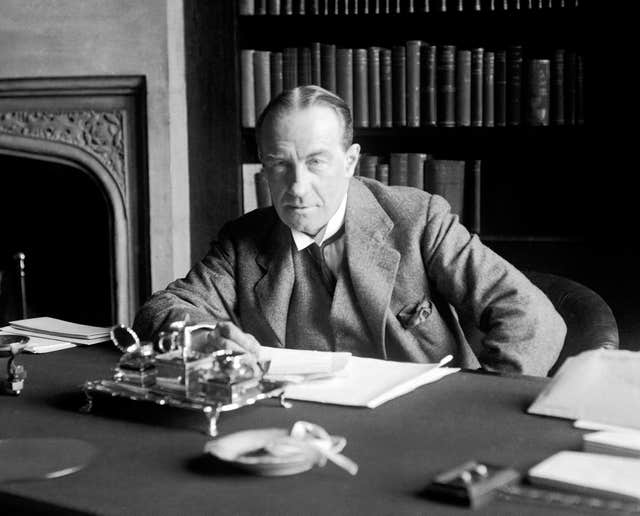How do Parliamentary majorities work?
As polls continue to predict a Labour landslide, what does it mean to control the agenda in the House of Commons?

What is a majority in Parliament?
To hold a majority in the House of Commons, a political party needs to win more than half the seats — at least 326 out of the possible 650. This allows a government to be formed by the winning party, whose leader would become the Prime Minister, to propose and vote on legislation without the rest of the House being able to vote against it.
In practice, a majority of one would be vulnerable to rebellion from MPs voting against their party, sitting independently after losing the party whip, or even defecting to another party.
However, the majority actually needed to govern is a little bit lower than the maths initially suggests, as the Speaker of the House and their deputies do not vote to maintain impartiality, and any Sinn Fein MPs elected in Northern Ireland will refuse to attend. So instead of 326, at the last election, 320 MPs would have sufficed as a working majority.
First Past The Post, the voting system used to elect MPs, tends to deliver strong majority governments with a significant Opposition. A referendum in 2011 to switch to the “Alternative Vote” system was opposed by 68% of voters.

When a party fails to achieve a majority, in a situation known as a “hung Parliament”, they can still attempt to form a minority government. This last happened in the UK under Theresa May in 2017. In that case, May’s Conservatives entered into a confidence-and-supply agreement with the DUP, which pledged to always vote with the Conservatives on certain issues but on a case-by-case basis for others.
Alternatively, if two (or more) parties can command a majority of MPs between them, they may form a coalition government. David Cameron’s Conservatives and Nick Clegg’s Liberal Democrats did so in 2010, setting out a list of areas where the two parties agreed and disagreed, with each giving concessions to the other.

With opinion polls showing a significant Labour advantage in the coming election, some Conservative politicians – including Defence Secretary Grant Shapps – have warned this could create a “supermajority” for Sir Keir Starmer.
It is a term usually associated with politics in the United States, and refers to situations where more than a simple majority of more than half is required in a vote. For example, a debate can be brought to a premature end and a vote forced by 60 Senators (out of 100 total), while a two-thirds Senate supermajority is required to ratify treaties.
Scottish politics also recognises supermajorities constitutionally, with laws that affect the election of MSPs being potentially subject to this restriction. A Scottish supermajority requires two thirds of MSPs to vote in favour.
But the House of Commons has no provisions for any laws requiring anything beyond a simple majority to be passed.
The largest House of Commons majority after an election was in 1924, when Stanley Baldwin’s Conservatives held a majority of 210 seats.

In theory, a British government with a majority of 10 MPs is no different from one with a majority of 100 MPs. Both are able to control the legislative agenda and pass laws with a majority vote.
In practice, things can get more complicated – Boris Johnson won a majority of 80 seats in 2019 (365 seats against 285 from every other party), but because of defections, by-elections and suspensions, the Conservative majority before the 2024 election was called had fallen to 42 (with 346 seats held).
The Conservatives’ reduced majority was still enough before the election to win a vote on amending immigration law and defeating an amendment to competition law.
The Opposition – the second-largest party in the Commons – therefore often struggles to beat government-backed motions, and instead scrutinises legislation through debates and its presence on various committees overseeing particular departments.
Links
Constituencies – MPs and Lords – UK Parliament (archived)
General Election 2017: full results and analysis – House of Commons Library (archived)
The 2017-19 Government at Westminster: Governing as a minority – House of Commons Library (archived)
First Past the Post – Electoral Reform Society – ERS (archived)
Alternative Vote Referendum 2011 – House of Commons Library (archived)
The 2010 Coalition Government at Westminster – House of Commons Library (archived)
Electoral Calculus: General Election Prediction (archived)
Post on X by @Channel4News (archived post and clip)
The Legislative Branch | The White House (archived)
What happens if a Bill does not become an Act | Scottish Parliament Website (archived)
General Election 2019: full results and analysis – House of Commons Library (archived)
State of the parties – MPs and Lords – UK Parliament (archived only)
The Tribunal Procedure (Upper Tribunal) (Immigration and Asylum Chamber) (Amendment) Rules 2024 – Commons’ votes in Parliament – UK Parliament (archived)
Digital Markets, Competition and Consumers Bill: Consideration of Lords Message: manuscript amendment – Commons’ votes in Parliament – UK Parliament (archived)





